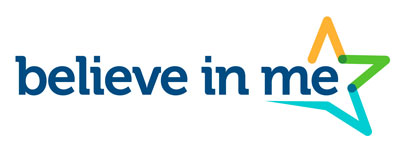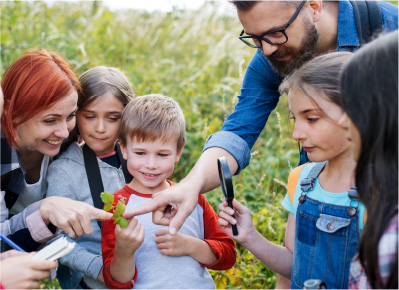Picture this: a classroom buzzing with ideas, where every lesson in financial literacy lights a spark of hope. In an era of economic uncertainty, teaching financial literacy for youth is not just an academic exercise—it’s a lifeline that can change futures. Marginalized youth often face complex socio-economic challenges, and financial education programs offer them the tools to break cycles of poverty. At Believe in Me, we believe that financial literacy is not simply about money; it’s about empowerment and the opportunity to rewrite one’s destiny.
A quick Google search reveals common queries including: “How does financial literacy benefit marginalized youth?”, “What financial education programs are effective?”, “Why is financial literacy important for youth?”, “How can financial literacy change the future?”, and “What are the success stories in youth financial education?” These questions highlight a deep interest in actionable ways to secure a financially stable future for young people.
This blog post dives into real-world examples, snarky insights, and hard-hitting facts about the transformative power of financial literacy. We connect these insights to Believe in Me’s mission, showcasing how our programs are turning theory into practice. Let’s unravel the story of how teaching money smarts can build lifelong resilience and drive change in communities.
Financial education isn’t an optional extra—it’s a crucial pillar of youth empowerment. And if you’re a parent, educator, or nonprofit leader looking to make a tangible impact, read on.
Overview: How Financial Literacy Empowers Marginalized Youth
Financial literacy for youth is one of the most underrated tools of empowerment in today’s world. Imagine a teenager who knows how to manage a budget, invest small sums, or understand credit scores. This isn’t just about crunching numbers; it’s about building confidence in navigating a world that often ignores those from marginalized backgrounds. Empowering youth with financial skills transforms their personal and professional trajectories.
Through financial education programs, disadvantaged young people learn to:
- Manage personal finances: Teach budgeting, saving, and spending wisely.
- Build credit: Understand how good credit behavior can open doors to opportunities.
- Invest in the future: Learn the basics of investing and planning for long-term goals.
- Break cycles of poverty: Equip them with knowledge to avoid predatory financial traps.
The benefits are extensive. According to the Consumer Financial Protection Bureau, youth financial education is essential in preparing young minds for the complex world of personal finance (Consumer Financial Protection Bureau 2023). UNICEF also underscores that financial education can significantly change a child’s prospects, particularly for those coming from marginalized communities (UNICEF 2023).
Case Study: How the Money Mindsets Program Is Redefining Financial Literacy for Marginalized Youth
At the intersection of mentorship and financial empowerment lies one of Believe in Me’s most transformative collaborations: Your Money Matters Mentoring, recipient of a $5,000 grant from Believe in Me in 2024. Based in Tacoma, Washington, Your Money Matters Mentoring was founded in 2018 to fill a significant gap in how financial literacy is delivered to low-income and BIPOC youth, particularly those who are justice-involved, in foster care, or attending alternative schools.
What makes this program a standout isn’t just its mission—it’s the depth of its strategy. The core of the initiative is the Money Mindsets program, a multi-module experience that goes far beyond balancing checkbooks or opening savings accounts. Participants, many of whom have faced systemic marginalization, are paired with trained financial mentors who act as guides through the nuanced and often intimidating world of personal finance.
Each cohort completes a series of 10 one-hour workshops, covering not only technical knowledge like budgeting, banking, credit-building, and debt management, but also crucial psychosocial elements such as money emotions, cultural financial norms, and personal values around money. This structure ensures that students aren’t just absorbing financial data—they’re internalizing it in ways that resonate with their lived experiences.
Take the “Money Emotions” module as an example. Youth participants explore how emotional triggers—such as stress, insecurity, or cultural pressure—impact their spending and saving behaviors. They learn to recognize and regulate these responses, transforming fear-based financial decisions into intentional ones rooted in awareness and self-worth.
Another powerful segment, “Money Values,” encourages students to align their financial behaviors with their long-term aspirations and moral compass. One participant, a high school senior named Jordan, shared that this module helped him reframe the guilt he felt for wanting to save money while living in a financially stressed household. “For the first time, I felt like my choices mattered and weren’t selfish. I was building a future, not abandoning my family,” he explained.
But the learning doesn’t stop in the classroom. The program includes one-on-one mentoring, which provides youth with tailored guidance based on their unique financial challenges and goals. Whether it’s navigating how to open a checking account, reading a W-2 for the first time, or creating SMART goals for savings, mentors walk alongside their mentees every step of the way. This hands-on, personalized support addresses the “now what?” moment that so many young people face after traditional financial workshops.
As a result, the outcomes are profound. Students emerge not only more financially competent but also more emotionally secure, culturally grounded, and confident in their ability to make decisions. They become advocates for financial literacy within their own communities, sparking a multiplier effect of knowledge and empowerment.
The Money Mindsets program exemplifies how Believe in Me champions initiatives that don’t just teach—they transform. Through this partnership, the organization is investing not just in better financial habits, but in the long-term economic independence and self-determination of youth who have historically been denied access to these opportunities.
For those interested in replicating or supporting similar initiatives, this program is a model of culturally relevant, trauma-informed, and mentorship-driven financial education—exactly the kind of scalable, heart-centered innovation our communities need.
The Role of Financial Literacy in the Community
So, why does teaching financial literacy for youth matter so much, especially for marginalized groups? For starters, inadequate financial knowledge can lead many down a path of insurmountable debt and financial instability. When young people have the tools to understand financial basics, they’re better equipped to avoid scams, resist the allure of high-interest loans, and plan effectively for the future.
Moreover, financial literacy instills a sense of agency. It helps marginalized youth understand that while they might face external challenges, they can control their financial destiny. Communities that invest in financial education build a resilient foundation where every individual is empowered to contribute meaningfully. This ripple effect enhances overall community stability and growth.
In short, financial literacy transforms economic disadvantage into a stepping stone for success. It’s no wonder that educators and policy makers are strongly advocating for robust financial education programs targeted at youth.
Actionable Ways the Audience Can Get Involved
Ready to translate financial theory into tangible impact? If you’re an educator, a nonprofit partner, or simply a parent who cares, here are some actionable ways you can support financial literacy for youth:
- Download the Financial Literacy Toolkit: Believe in Me has crafted a comprehensive toolkit designed to help educators and community leaders kickstart financial education programs. It’s available for download, and your feedback is invaluable.
- Volunteer Your Expertise: Whether you’re a financial advisor or a passionate community member, consider hosting workshops or mentoring sessions on budgeting, saving, and investing.
- Partner with Local Schools: Collaborate with academic institutions to integrate financial literacy into the curriculum. Your insights could help shape the next generation of financially savvy leaders.
- Share Your Success Stories: Empower others by sharing experiences of financial empowerment on social media, community blogs, and at local events.
- Donate to Support Programs: Financial contributions can help scale these programs, ensuring that more marginalized youth receive the education they need.
Each step, no matter how small, paves the way for a future where every young person has the tools to succeed. By supporting these initiatives, you become part of a larger movement that is redefining financial stability for youth.
Conclusion: Empowering Youth Through Financial Literacy
Financial literacy for youth is more than just a subject—it’s a transformative tool that can shift the balance of opportunity for marginalized communities. Through robust financial education programs, young people gain the necessary skills to navigate financial challenges, avoid debt traps, and even invest in their futures. The remarkable stories of students like Maria and community clubs led by mentors like Jamal illustrate the profound impact of financial literacy.
Believe in Me is at the forefront of this change, leveraging innovative financial literacy tools and educational programs to make a real difference. Whether you are an educator, a nonprofit organization, or a caring parent, your involvement can help transform the future.
Download the financial literacy toolkit today, volunteer your time, or spread the word on social media. Together, we can create a world where every youth, regardless of background, enters adulthood with the confidence to manage their finances and build a brighter future.
Empowerment starts with knowledge—and that knowledge is just a click away.
Citations: Consumer Financial Protection Bureau. 2023; UNICEF. 2023.
Get to know more about Believe in Me and Help a Kid Today
References
Consumer Financial Protection Bureau. 2023; UNICEF. 2023.






